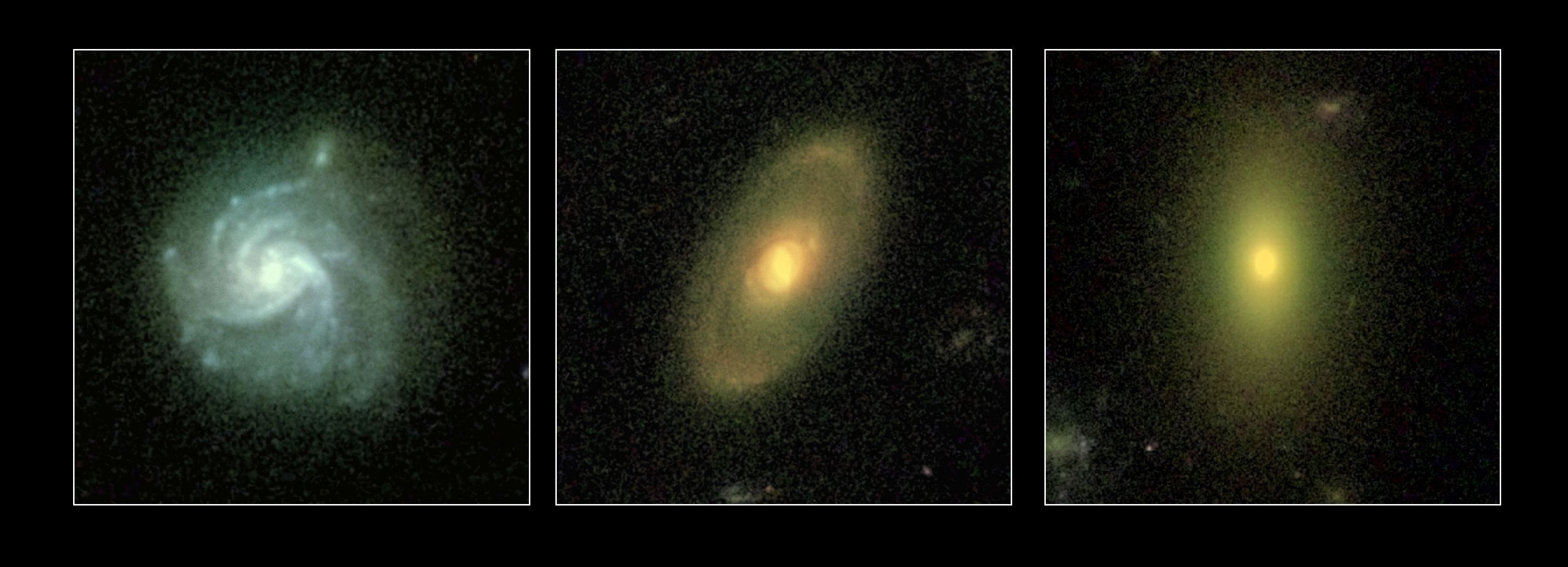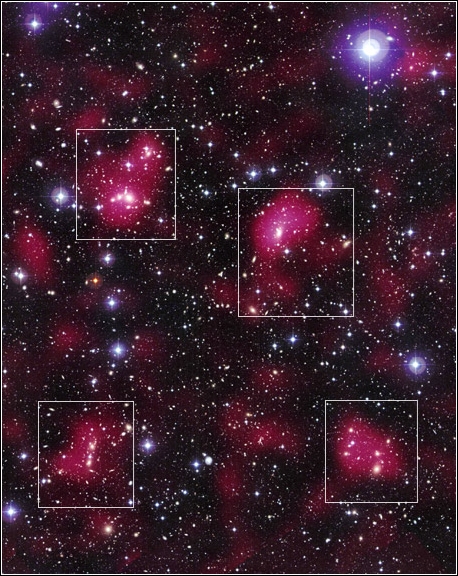Public pages > Press releases
Jump to:» Nov 2008: red spirals
» Jan 2008: dark matter
November 2008: Strangled spiral galaxies

image credit: M. Barden, C. Wolf, M. Gray and the STAGES team (click for full-size)
These images of galaxies from the STAGES survey show how a newly discovered population of red spiral galaxies on the outskirts of crowded regions in the Universe may be a missing link in our understanding of galaxy evolution.
Large numbers of these "red spirals" were uncovered independently by two UK-led international collaborations: Galaxy Zoo, which uses volunteers from the general public to classify enormous numbers of galaxies; and STAGES, which uses images from the Hubble Space Telescope to look in detail at the Abell 901/902 supercluster system.
The red spiral galaxies (centre) are still disk-like and recognizably spiral in shape, their spiral arms are smooth than "normal" spiral galaxies (left). Furthermore, their colour is as red as seen in old elliptical galaxies (right). Astronomers from both teams believe these red spirals are objects in transition, where star formation has been shut off by interactions with its environment.
The STAGES results are led by Christian Wolf and will appear in a forthcoming issue of the Monthly Notices of the Royal Astronomical Society.
January 2008: Mapping dark matter

image credit: C. Heymans, M. Gray, M. Barden, C. Wolf, K. Meisenheimer, and the STAGES team (click for full-size)
The image above shows the STAGES view of dark matter in the Abell 901/902 supercluster. The map was created by Catherine Heymans using a technique called weak gravitational lensing, which detects the invisible form of matter that accounts for most of the Universe's mass.
The dark matter map was constructed by measuring the distorted shapes of over 60000 galaxies in the high resolution Hubble Space Telescope images of the region. To reach Earth, the light from the galaxies travelled through the dark matter that surrounds the supercluster galaxies and was bent by the massive gravitational field. We are able to detect those subtle distortions and use them to reconstruct the invisible skeleton of the large-scale structure.
The results, presented in the Monthly Notices of the Royal Astronomical Society, pinpointed four main areas in th supercluster where dark matter has pooled into dense clumps. These areas match the location of hundreds of old galaxies that have experienced a violent history in their passage from the outskirts of the supercluster into these crowded neighbourhoods.
A selection of our press coverage:
- the Guardian
- BBC online
- Science magazine
- interview with Catherine on CBC radio's "Quirks and Quarks"
- National Geographic online
- Maclean's magazine
- space.com
- wired.com
- Science Daily
- the Bad Astronomer's blog
- Nature blog
- CTV



